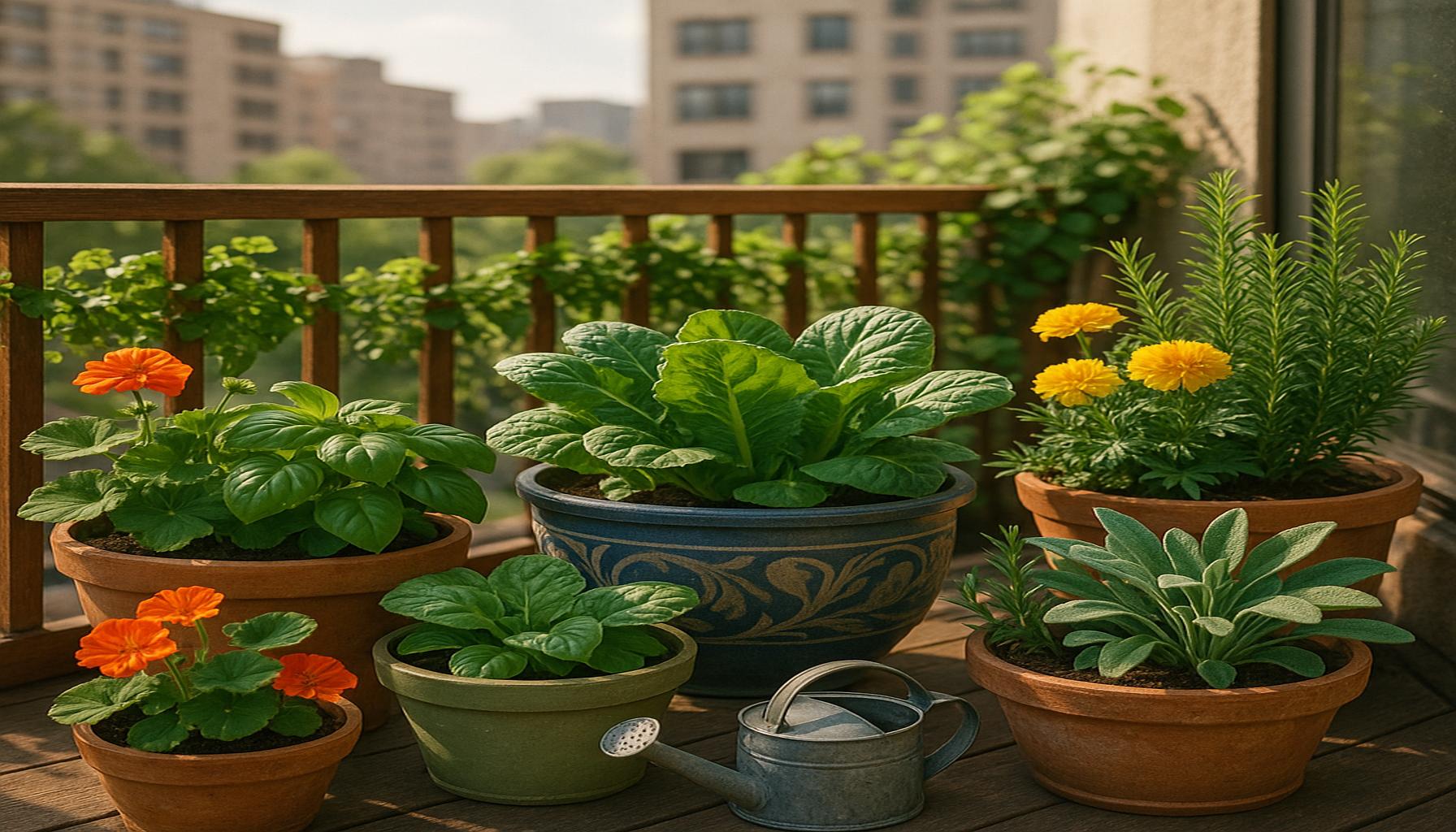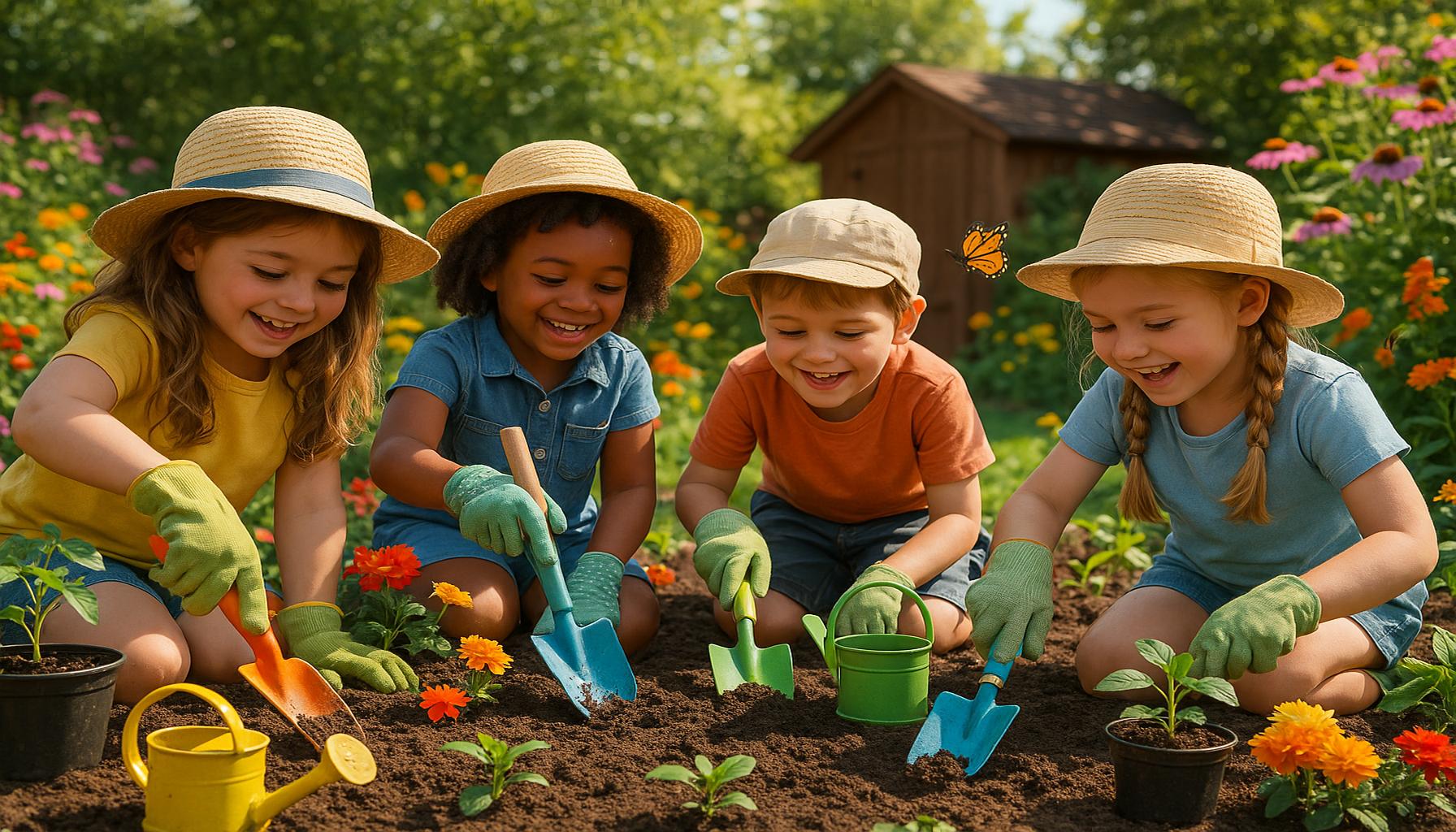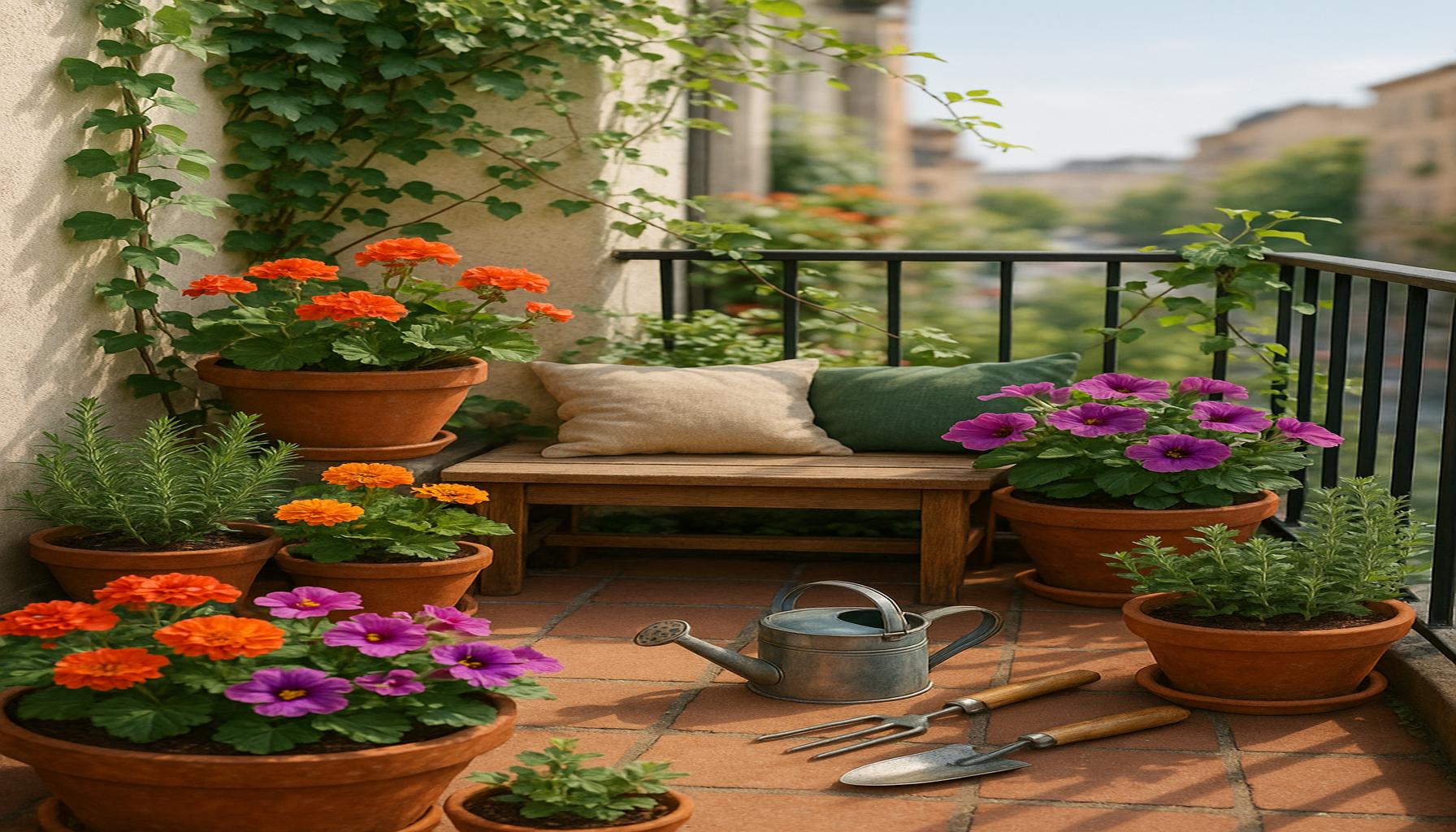Container Gardening: Creating Green Spaces in Urban Environments

Revitalizing Urban Spaces through Container Gardening
Urban environments, often dominated by concrete and steel, can feel bleak and uninviting. However, container gardening is a remarkable solution that brings life and vibrancy to these spaces. This practice transforms balconies, rooftops, and patios into lush green retreats, fostering a connection to nature that many city dwellers crave. With the rise of urbanization, container gardening emerges as a crucial aspect of city living, allowing residents to reclaim their connection to the earth, even in a bustling metropolis.
Container gardening offers several compelling benefits, including:
- Accessibility: It’s perfect for those with limited space, whether you live in an apartment or a small home. Even if only a window sill is available, a few pots can make all the difference, enabling people to grow their own herbs like basil or cilantro right at home.
- Versatility: A wide variety of plants can thrive in containers, from herbs and vegetables to flowers and ornamental grasses. For instance, tomatoes and peppers can flourish in medium-sized pots, while decorative plants such as succulents and ferns lend a stylish touch to balconies and patios.
- Mobility: Container gardens offer the ability to easily rearrange your green spaces to adapt to changing sunlight and personal preferences. This means you can move your plants around to ensure they get the right amount of light or to simply refresh the aesthetic of your living area.
In cities across the United States, from bustling New York to sunny Los Angeles, community gardens and urban farms are emerging. These initiatives not only beautify neighborhoods but also promote sustainability through local food production. For example, The Battery Urban Farm in New York City is a prime example of how urban agriculture can flourish, providing educational programs on sustainable gardening while also yielding fresh produce for the community.
By embracing container gardening, residents can contribute to creating green spaces that enhance biodiversity and combat urban heat. Studies have shown that urban greenery can lower temperatures, improve air quality, and reduce the urban heat island effect, which is particularly significant in cities during the summer months.
As we explore the world of container gardening, we’ll uncover practical tips, plant ideas, and inspiring stories that breathe life into even the smallest urban spaces. Consider starting with easy-to-grow plants such as herbs, which require minimal maintenance and can be used in everyday cooking. Additionally, engaging with local gardening clubs can provide not only knowledge but also a sense of community among fellow city dwellers. Discover how to create your own green oasis and reimagine your environment, turning concrete jungles into thriving habitats filled with color and growth.
DIVE DEEPER: Click here to discover more
Practical Steps to Start Your Container Garden
Getting started with container gardening can be both exciting and overwhelming for urban dwellers. Fortunately, the beauty of gardening in containers is its accessibility and ease of practice. With a little guidance, you can cultivate your own vibrant green space, no matter how limited your urban environment may be. Here are essential steps to help you embark on your container gardening journey:
- Select the Right Containers: The first step is choosing containers that fit your style and meet your plants’ needs. Opt for materials such as clay, plastic, or metal, ensuring they have drainage holes to prevent waterlogging. Creative options like reclaimed wooden crates or decorative baskets can add charm to your container garden.
- Choose the Right Soil: Proper soil is key to the success of your plants. Use high-quality potting mix designed for container gardening, as it retains moisture while providing essential nutrients. Avoid garden soil, which can become compacted in containers, hindering root growth.
- Pick Plants Suited for Containers: When selecting plants, consider those that thrive in smaller spaces and offer a variety of colors and textures. For beginners, herbs such as parsley, chives, and mint are ideal choices. They require minimal care and can be used fresh in your kitchen.
- Ensure Adequate Sunlight: Positioning your containers in an area with the right amount of sunlight is crucial. Most fruits and vegetables need at least six hours of sunlight daily. If your balcony or patio is shaded, consider using reflective surfaces or strategic plant placement to maximize light exposure.
- Water Wisely: Container plants generally require more frequent watering than garden plants due to their limited soil volume. Check moisture levels regularly and water when the top inch of soil feels dry. Remember that factors like temperature and plant type will influence watering frequency.
Besides being an enjoyable and fulfilling hobby, container gardening can serve various purposes in urban settings. It can provide fresh produce, beautify neglected areas, and enhance community cohesion. According to a report from the American Community Gardening Association, over 18 million Americans participate in gardening initiatives annually, showcasing the growing trend of urban gardening and its potential benefits.
Moreover, container gardens can support biodiversity by providing habitats for pollinators like bees and butterflies. When you plant a variety of species, you not only create visual interest but also attract essential wildlife to your urban area. Studies have shown that increasing green spaces in cities can improve mental well-being and lower stress levels, making container gardening more than just a pastime—it’s a pathway to a healthier lifestyle.
As you delve into the world of container gardening, keep in mind the importance of planning your space wisely. Create a garden layout that allows for easy access and maintenance while being mindful of aesthetics. Experimenting with colors, heights, and plant combinations can lead to a stunning visual display, breathing new life into your urban living quarters.
Container Gardening: Creating Green Spaces in Urban Environments
In urban landscapes where green spaces are scarce, container gardening offers a transformative solution. By allowing individuals to cultivate plants in portable containers, this method not only beautifies concrete settings but also contributes significantly to environmental health. With the right plants, anyone can convert a balcony, patio, or even small yards into lush representations of nature.
| Advantages of Container Gardening | Impact on Urban Environments |
|---|---|
| Space Efficiency | Maximizes limited urban spaces by utilizing vertical and horizontal areas. |
| Improved Air Quality | Plants absorb pollutants, thereby enhancing the air quality for city dwellers. |
Moreover, container gardens can serve as a resilient green infrastructure. By using native plants, they can support local biodiversity, attracting beneficial insects and birds. Apart from adding aesthetic value, they also provide food sources, making urban gardening an essential aspect for sustainable living in cities. Embracing container gardening not only enriches individual lives but also contributes to a larger ecological balance that urban environments desperately need.
DISCOVER MORE: Click here to enhance your storytelling skills
Maximizing Your Urban Container Garden
Once you have established your container garden, it’s time to maximize its potential. Urban environments often restrict the amount of space available for gardening, but with innovative techniques, you can make the most of your available area. Here are some strategies to elevate your container gardening experience:
- Vertical Gardening: If you’re limited on ground space, consider implementing vertical gardening solutions. Use wall-mounted shelving, hanging pots, or trellises to create a multi-layered garden. Climbing plants, such as peas, tomatoes, and cucumbers, are perfect candidates for vertical growth. This approach not only saves space but also adds a striking visual element to your urban landscape.
- Seasonal Planting: In urban environments, seasonal changes can affect what can be grown. Embrace a strategy of rotating your plants seasonally to optimize your harvest. For example, in spring, plant cool-weather crops like lettuce and radishes. When summer arrives, switch to heat-loving varieties such as zucchini and bell peppers. This not only extends your growing season but also allows for a continuous supply of fresh produce.
- Companion Planting: Utilize the concept of companion planting to make the most of your limited container space. Certain plants, when grown together, can enhance growth and deter pests. For instance, basil grows well with tomatoes, not only improving their flavor but also helping to repel harmful insects. Research companion planting combinations to create a healthier garden ecosystem.
- Frequent Harvesting: Frequent harvesting encourages growth in container gardens. Regularly picking herbs, greens, and other vegetables can stimulate the plant to produce more. This concept is particularly important for edible plants, as it ensures a continual supply of fresh ingredients for your meals, no matter how small your space may be.
- Community Engagement: Engaging with your community can enrich your container gardening experience. Urban gardening initiatives, local gardening clubs, and community gardens are excellent avenues for sharing knowledge and resources. Participating in communal gardening events allows you to exchange plants, seeds, and gardening techniques, while also fostering a sense of community spirit.
Urban spaces can significantly benefit from the incorporation of container gardens, which can range from simple herb pots on a windowsill to fully-fledged rooftop gardens. According to a survey conducted by the National Gardening Association, over 75% of urban gardeners reported a boost in their overall mood and well-being, highlighting how these green interventions promote mental health in cities. Furthermore, urban gardening projects have been linked to reduced crime rates and enhanced community cohesion, suggesting that when people garden together, they plant the seeds for stronger communities.
Additionally, container gardening encourages sustainability in urban areas. By growing your own produce, you contribute to reduced carbon footprints associated with transporting food from rural farms to city markets. Implementing practices such as composting kitchen scraps allows you to create nutrient-rich soil for your plants, creating a cyclical relationship between your kitchen and garden.
As you cultivate your container garden, don’t forget to embrace the creative aspect of gardening. Personalizing your space with colorful plant pots, decorative plant labels, and artistic arrangements transforms your container garden from a functional space into a vibrant extension of your home. With patience and experimentation, you’ll discover the joy of nurturing life in even the tightest of urban confines.
DISCOVER MORE: Click here for garden transformation tips
Conclusion: The Future of Urban Green Spaces
As cities continue to expand and urban living becomes increasingly prevalent, container gardening emerges as a versatile and essential practice for fostering green spaces within limited environments. By embracing innovative techniques such as vertical gardening, seasonal planting, and companion planting, urban dwellers can transform underutilized spaces into vibrant hubs of life and sustainability. Not only do these gardens enhance the aesthetic appeal of urban landscapes, but they also offer profound psychological benefits, as the act of nurturing plants can lead to improved mental health and community well-being.
The true power of container gardening lies in its ability to engage communities. By organizing local gardening events and initiatives, urban residents can come together, share knowledge, and foster deeper connections. These collaborations not only help in educating individuals about sustainable practices but also nurture a sense of belonging, making the city feel more like home. Additionally, by growing food locally, urbanites can greatly diminish their carbon footprint and promote *food security*, reinforcing the importance of sustainability in modern living.
As you consider embarking on your own container gardening journey, think beyond the pots and soil. Envision a greener future, where communities thrive amidst cities that value not only infrastructure but also the natural beauty. Your container garden could serve as a testament to the profound impact one small space can have on enhancing urban life, proving that every city dweller can cultivate a slice of nature, regardless of the size of their habitat. With each plant nurtured, you contribute to a collective movement towards greener, healthier, and more sustainable urban environments.


